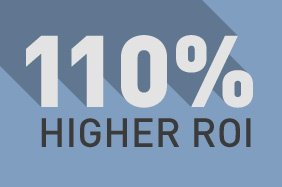
Intent-Driven Advertising on Facebook: What You Need to Know
 Digital advertisers rejoice: a new tool just came out that will take us one step closer to our audiences. Kenshoo, a Facebook Strategic Preferred Marketing Developer, recently introduced Intent-Driven Audiences (IDA), which allows digital advertisers to simultaneously target users in two very popular places: Google and Facebook (the #1 and #4 web properties, respectively).
Digital advertisers rejoice: a new tool just came out that will take us one step closer to our audiences. Kenshoo, a Facebook Strategic Preferred Marketing Developer, recently introduced Intent-Driven Audiences (IDA), which allows digital advertisers to simultaneously target users in two very popular places: Google and Facebook (the #1 and #4 web properties, respectively).
IDA uses Google search data to help businesses expand, shape, and customize the audiences they reach on Facebook.
Sounds pretty interesting, right? We thought so, too – so we have been testing it out over the past couple weeks. Here’s what we’ve learned.
What is it?
Intent Driven Audiences is available to businesses on Facebook, and accessed directly through their Facebook advertising accounts.
It allows businesses to directly target their Facebook advertisements to specific audiences – audiences which have been shaped not only by their actions on Facebook, but also by their actions on Google and Google’s partner sites.
IDA can further expand or segment your audience to include people who download your app, receive your e-newsletter, and/or view your website.
In short, IDA gives you the power to merge what were once separate platform audiences – your e-mail list subscribers, your Google Adwords campaign clickers, and your mobile app users, for example – into a single group which you can target on Facebook.
And there’s more. The Intent Driven Audiences tool also highlights and targets “lookalike” audiences for you to target, based on its expansive and detailed data from both Facebook and Google.
Pretty powerful stuff.
Where did it come from?
IDA is an expansion and improvement upon existing tools. At present you can, to an extent, refine your Facebook target audience based on Google search – but to do so, you have to use an approved third-party vendor through Facebook Exchange (FBX). When you go through one of these third-party vendors, you have little control when it comes to shaping your audience and little input in how and when they are marketed to.
Furthermore, the Cost per Click (CPC) and Cost per Acquisition (CPA) on these platforms, as compared to IDA, is quite high.
Why does it matter?
IDA is the answer to a couple questions many digital advertisers have, such as 1) How can I access the same audience across different platforms? and 2) How can I further refine and shape the audience I target on Facebook?
For example, let’s say you want to advertise on Facebook to women actively shopping for wedding dresses. Without IDA, you can attempt this in a number of ways – by simply crafting a Facebook audience based on their user information (selecting an audience with “female” and “engaged” Facebook profile information, for example), and/or by going through FBX to have a third-party company use its data (mined from various vendors and sites) to target the audience for you.
With IDA, there’s a lot less guesswork. You can not only employ the two methods above, but also tweak your target Facebook audience to include women who have recently searched for keywords like “wedding dress,” “white dress,” and “wedding store” and have clicked a Google advertisement for wedding dresses within the Google network. You can then refine and segment these audiences to create more customized messages as you reach out to them on Facebook.
So, a woman who Google searches for “wedding dresses” will see your Google Ad Campaign first; and then, when she checks her Facebook feed a minute later, see another one of your ads show up.
What sort of results can I expect? According to the team at Kenshoo, who conducted a multi-month study, its product is a huge improvement on current digital marketing tools. It claims that Facebook campaigns targeting Intent-Driven Audiences achieved up to 110% higher ROI and 66% lower CPC than their analogous search engine marketing (SEM) campaigns.
According to the team at Kenshoo, who conducted a multi-month study, its product is a huge improvement on current digital marketing tools. It claims that Facebook campaigns targeting Intent-Driven Audiences achieved up to 110% higher ROI and 66% lower CPC than their analogous search engine marketing (SEM) campaigns.
Although we have far less data to work with, our short tests have yielded positive results so far. This is particularly true when looking at CPCs and CPAs, which have significantly lowered since we started using IDA.
We’re seeing that IDA allows us to minimize “wasted impressions” on users not likely to engage with our clients, and maximize targeting to audiences more likely to convert.
What more could you ask for? Well, we’d like to ask Kenshoo to throw Twitter, Pinterest, and Instagram into the mix, but we’ll save that for a future post…
What do I do now?
Get ahead of the game and start reaching out to customized audiences at the intersection of Google and Facebook. Get in touch with us, and to learn how to make it happen.






